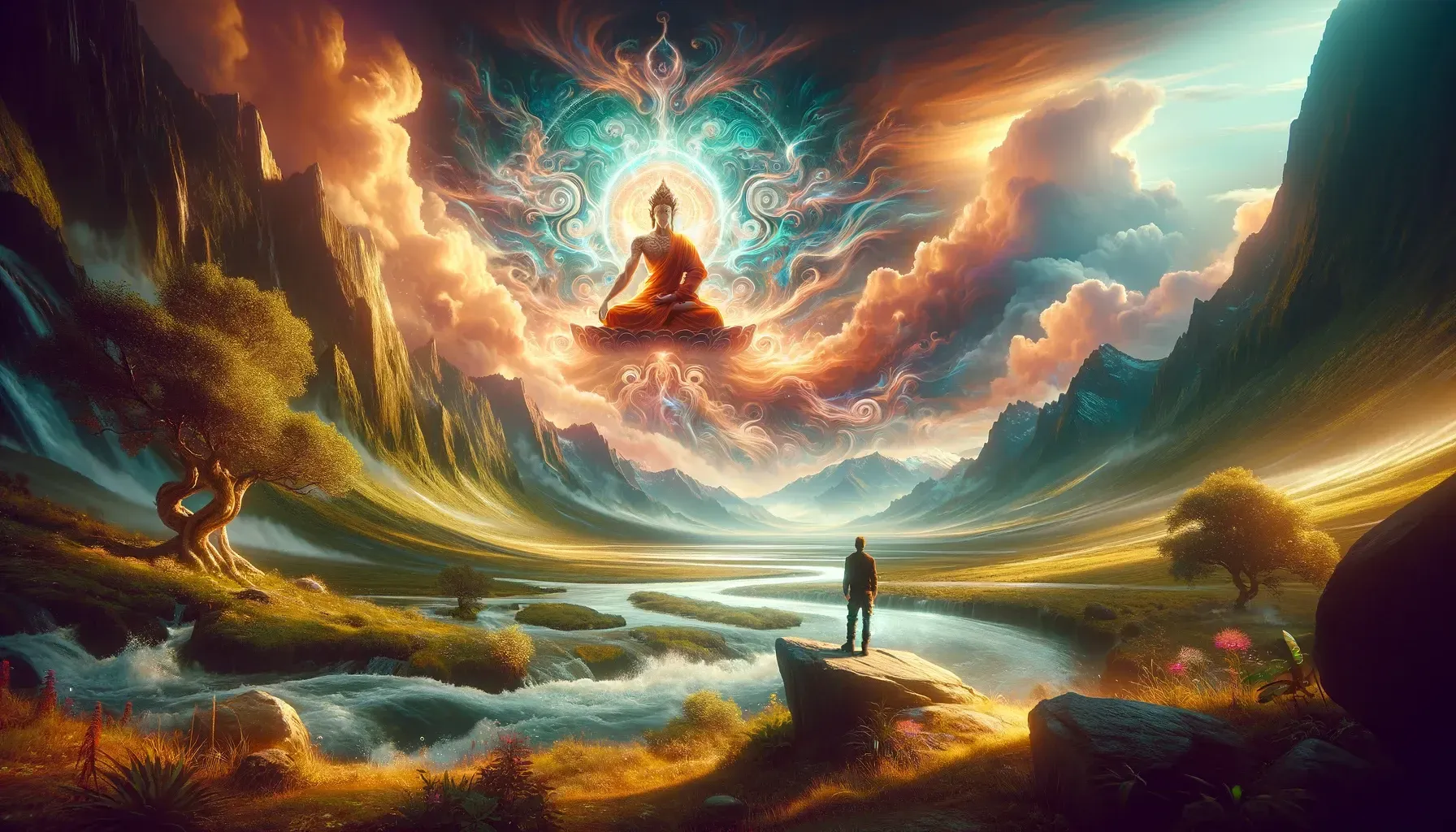After Enlightenment, There’s Tantra
There are three major schools of Buddhism: Theravadan or Hinayana, Mahayana, and Vajrayana or Tantra. Practitioners of zazen are commonly followers of Soto Zen Buddhism, which is part of the Mahayana school. I have fairly good knowledge of the Mahayana and its emphasis on the Boddhisattva and compassionate service to all sentient beings. I know Hinayana mainly through the Bahiya Sutta, which advises the elimination of ego or the idea of a real personal self, and through the ideal of the Arhat, who has accomplished this elimination. However, when I began thinking of the three main Buddhist schools, I realized I had no knowledge at all of Vajrayana or Tantra.

So I turned to a book of talks by Chogyam Trungpa given at Naropa University in 1974. The book is Journey Without Goal, with the subtitle “The Tantric Wisdom of the Buddha.” The The book revealed to me the very interesting fact that faithful zazen practitioners may seamlessly flow into Tantra.
As a result of zazen, the sense of personal self may at some point drop from the practitioner’s mind, which convinces him or her of the nonexistence of the self. This did happen to me, as I explain in the essay on this website, “Zazen and Ego (personal experience of loss of ‘I’).” Also, the result of continued practice is commonly that realization of non-self gradually grows in the practitioner’s mind. However it happens, this realization creates a flow into tantra; it is the ticket onto the tantra train. Trungpa says, “In order to us to get into tantra properly, . . . we have to go through the experience of nonexistence.”[1]
Having gone through this experience, the zazen practitioner is essentially an enlightened person. So an enlightened person gradually acquires some of the major characteristics of tantra. To acquire these, however, does not require deliberate effort on the enlightened person’s part. In the last paragraph of Journey Without Goal, Trungpa says,
I feel that it is absolutely important to make the practice of
meditation your source of strength, your source of basic
intelligence. You could sit down and do nothing, just sit
and do nothing. . . .You actually can survive beautifully
by doing nothing.[2]
I take this to imply that as the practitioner simply continues to meditate, he or she picks up the characteristics of tantra as a matter of course. As Trungpa says, “Vajra nature” is “the experience of the enlightened state of being.”[3]
Trungpa continues that Vajra consciousness is “a real state of being, a true state of being that is full and complete.”[4] Rather than “covering up separateness,” which I take to be an allusion to the Mahayana stress on non-separateness and unity of being, in Vajra consciousness, Trungpa continues, “we simply acknowledge the dualistic gap rather than trying to unify or conceal it.”[5] Trungpa adds, “In . . .Buddhist tantra, . . .we do not try to make sure that the world is part of us.”[6]
In tantra, acknowledging duality releases energy in the zazen practitioner. Trungpa says that energy is “simply the rubbing together of you and the phenomenal world, you and other.” He continues, “The split between self and other is taking place constantly, constantly creating energy, and we are always trying to work with it.”[7] “In Buddhist tantra,” Trungpa adds, “energy is openness and all-pervasiveness. It is constantly expanding. It is decentralized energy, a sense of flood, ocean, outer space, the light of the sun and moon.”[8]
In tantra, Trungpa also says, “We. . .surrender to groundlessness: there is no ground for us to develop security.”[9] In a condition of egolessness, we forgo feeling comfortably secure and grounded. We discover that “the universe is open space.”[10] With greater openness, which Trungpa calls “shedding our skin,”[11] “We rediscover the world that exists around us, and we begin to find that this world is fabulous and fantastic.”[12]
Once a person enters tantra, Trungpa says, “There is a continual sense of journey throughout the path.”[13] Along the journey, we develop “fearlessness”[14] and “endless spontaneity.”[15]
In effect, enlightenment, over time, galvanizes the meditator into a condition of life that is full of energy, open, spacious, fearless, and spontaneous. You can call this Vajra nature, tantra, or simply a very heightened level of being.
Footnotes
- Chogyam Trungpa, Journey Without Goal, Boston and London, 2000, p. 24.
- Ibid, p. 142.
- Ibid., p. 28.
- Ibid., p. 29.
- Ibid., p. 42.
- Ibid., p. 44.
- Ibid., p. 41.
- Ibid., p. 45.
- Ibid., p. 53.
- Ibid., p. 61.
- Ibid., p. 59.
- Ibid., p. 58.
- Ibid., p. 121.
- Ibid., p. 139.
- Ibid., p. 140.
All Rights Reserved | Zazen Essays